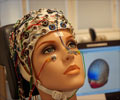The electrical activity of the brain generated by scalp surface is measured by a test called electroencephalography.

Researchers from Pabna University of Science and Technology (Pabna, Bangladesh) and the University of Tokyo (Tokyo, Japan) used a data adaptive technique for artifact suppression and brain wave extraction from electroencephalography signals to detect regional brain activities. The regional brain activities were mapped on the basis of the spatial distribution of rhythmic components. The researchers found that the data adaptive technique is very efficient in artifact suppression and identifying individual motor imagery based on the activities of alpha component. They also found that different regions of the brain are activated in response to different stimuli. These findings were published in the Neural Regeneration Research (Vol. 8, No. 16, 2013).
Source-Eurekalert














